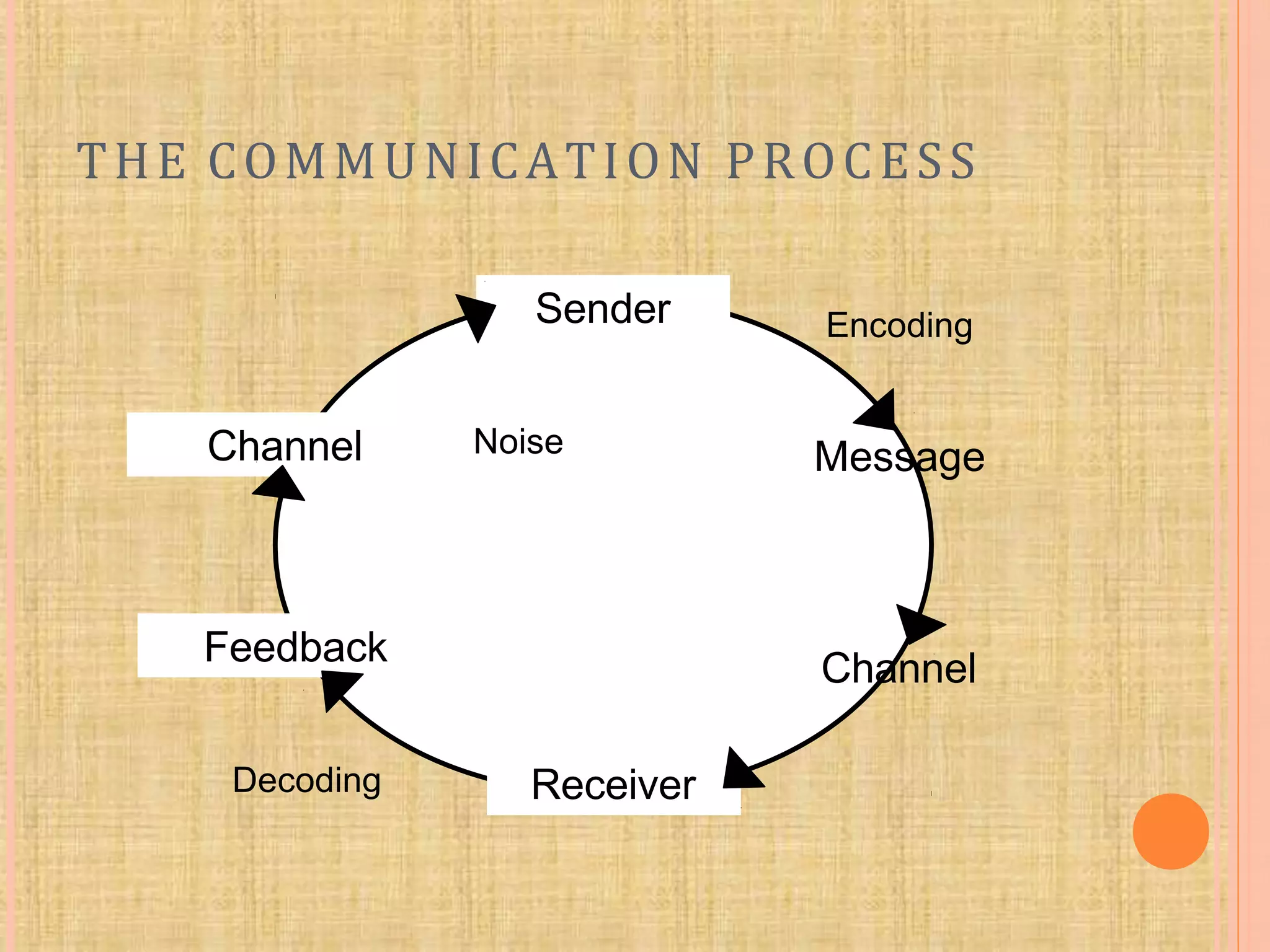Communication is a two-way process of sharing information between individuals through both verbal and non-verbal means. It involves encoding a message by the sender, transmitting the message through a channel, decoding the message by the receiver, and providing feedback to the sender. The key components of the communication process are the sender, message, channel, receiver, decoding, and feedback. Effective communication requires understanding between all parties.
















